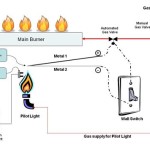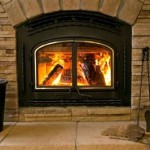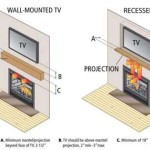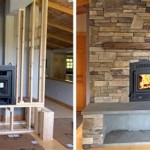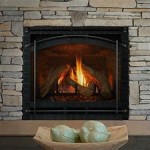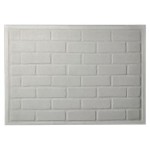Suspended Outdoor Fireplaces: A Modern Focal Point for Outdoor Living
The suspended outdoor fireplace represents a significant departure from traditional fire pit and built-in fireplace designs. Characterized by its suspended construction, this type of fireplace offers a visually striking and architecturally interesting addition to outdoor living spaces. Rather than resting directly on the ground or being integrated into a wall, it hangs freely, often suspended from a central support structure. This unique design element provides both aesthetic appeal and functional benefits, making it an increasingly popular choice for homeowners and designers seeking to elevate the ambience of their outdoor areas.
The concept of a suspended fireplace, while relatively modern in its widespread application, draws inspiration from various sources. The desire to minimize ground impact, create visual lightness, and maximize heat distribution are all contributing factors to its development. Utilizing durable materials and innovative engineering, manufacturers have successfully crafted suspended fireplaces that are both safe and reliable, capable of withstanding the elements and providing years of enjoyment.
The visual impact of a suspended fireplace is often its primary draw. The floating nature of the design creates a sense of openness and airiness, contrasting starkly with the more grounded and substantial appearance of traditional fireplaces. This unconventional aesthetic can complement a wide range of architectural styles, from minimalist modern to rustic contemporary, adding a touch of sophistication and intrigue to any outdoor setting.
Enhanced Aesthetics and Visual Appeal
One of the most significant advantages of a suspended outdoor fireplace is its impact on the overall aesthetic of the outdoor space. The suspended design immediately draws the eye, creating a focal point that commands attention without being overly obtrusive. The sculptural quality of the fireplace, often crafted from materials like steel or copper, adds an artistic element to the landscape. This is further enhanced by the flickering flames, which cast a warm and inviting glow around the surrounding area.
The ability to customize the appearance of the suspended fireplace also contributes to its aesthetic appeal. Manufacturers offer a variety of finishes, shapes, and sizes to suit individual preferences and design requirements. Powder-coated steel provides a sleek and modern look, while weathered copper offers a more rustic and traditional feel. The choice of fuel, whether wood-burning, gas-powered, or ethanol-based, can also impact the visual experience. Wood-burning fireplaces offer the classic charm of crackling flames and natural aroma, while gas-powered alternatives provide convenience and ease of use.
Furthermore, the open and airy nature of the suspended design allows for unobstructed views of the surrounding landscape. Unlike enclosed fireplaces that can block sightlines, a suspended fireplace maintains a sense of connection with the natural environment. This is particularly beneficial in settings with scenic views, such as gardens, patios, or decks overlooking water features or mountain ranges. The combination of the fireplace's visual appeal and the surrounding scenery creates a truly immersive and captivating outdoor experience.
The visual advantages also include creating a sense of spaciousness. Because they don't take up as much ground space as traditional fireplaces or fire pits, suspended models can make smaller outdoor areas feel larger and more open. This is particularly valuable in urban settings or properties with limited outdoor space.
Improved Heat Distribution and Safety Considerations
Beyond aesthetics, suspended outdoor fireplaces offer potential improvements in heat distribution compared to traditional designs. The elevated position of the firebox allows the heat to radiate outwards and downwards, providing a more even distribution of warmth across a larger area. This can be particularly beneficial in cooler climates or during evening gatherings when maintaining a comfortable temperature is essential.
Traditional fireplaces often concentrate heat in a localized area directly in front of the firebox. While this can be suitable for close proximity seating, it may not be sufficient for warming larger groups or outdoor spaces. Suspended fireplaces, on the other hand, are designed to project heat in a more widespread pattern, making them better suited for larger gatherings and diverse seating arrangements.
However, safety considerations are paramount when dealing with suspended outdoor fireplaces. The open flame and elevated position require careful attention to prevent accidents and ensure the safety of users and surrounding property. Manufacturers typically incorporate safety features such as spark screens, heat shields, and stable suspension systems to mitigate potential risks.
Proper installation and maintenance are also crucial for ensuring the safe operation of a suspended fireplace. Professional installation is generally recommended to ensure that the suspension system is securely mounted and that all connections are properly sealed. Regular maintenance, including cleaning the firebox and chimney (if applicable), is essential for preventing buildup of creosote or other flammable materials. It's also important to adhere to local fire codes and regulations regarding the use of outdoor fireplaces.
Furthermore, the choice of materials for the surrounding area is an important safety consideration. Flammable materials such as wood or dry vegetation should be kept at a safe distance from the fireplace to prevent accidental fires. Using non-combustible materials such as stone, concrete, or metal around the fireplace can further enhance safety and minimize the risk of fire.
Another aspect of safety relates to the surface beneath the suspended fireplace. Although the heat radiates outward and downwards, it is still important to ensure that the ground surface can withstand the residual heat. Materials like grass or wood decking might be susceptible to damage or even ignition if directly exposed to sustained high temperatures. Protective measures, such as a heat-resistant mat or barrier, should be considered in such cases.
Versatility in Design and Application
The suspended outdoor fireplace offers significant versatility in design and application, making it suitable for a wide range of outdoor living spaces. It can be incorporated into patios, decks, gardens, poolside areas, and even covered outdoor kitchens. Its adaptability and aesthetic appeal make it a popular choice for both residential and commercial settings.
The ability to customize the height and position of the fireplace allows for optimal placement within the outdoor space. It can be suspended at a height that maximizes heat distribution, provides unobstructed views, and complements the surrounding landscape. The choice of suspension system, whether a single chain, multiple cables, or a fixed support structure, can also impact the overall aesthetic and functionality of the fireplace.
The selection of fuel type further enhances the versatility of suspended fireplaces. Wood-burning models offer the authentic charm of a traditional fire, while gas-powered alternatives provide convenience and ease of use. Ethanol-based fireplaces offer a clean-burning and eco-friendly option, suitable for areas where wood-burning or gas connections are not feasible.
Furthermore, suspended fireplaces can be integrated with other outdoor features, such as seating areas, lighting systems, and water features. The fireplace can serve as a central gathering point, creating a warm and inviting atmosphere for socializing and relaxation. Integrated lighting can enhance the ambience and provide additional illumination for outdoor activities. Water features, such as fountains or ponds, can create a sense of tranquility and complement the visual appeal of the fireplace.
The structural requirements for supporting a suspended fireplace must also be carefully considered. The weight of the fireplace, including the fuel and suspension system, must be adequately supported by the overhead structure. This may require reinforcing the existing structure or installing a dedicated support system, depending on the size and weight of the fireplace. A qualified structural engineer should be consulted to ensure that the support structure is adequate and meets all applicable building codes.
The placement of the fireplace relative to prevailing winds is another factor to consider. Strong winds can affect the direction of the flames and potentially create a hazard. Positioning the fireplace in a sheltered location or using a windbreak can help to mitigate these effects and ensure a safe and enjoyable experience. Strategic landscaping, such as planting trees or shrubs, can also serve as a natural windbreak and enhance the privacy and aesthetics of the outdoor space.
Ultimately, the versatility of the suspended outdoor fireplace lies in its ability to be tailored to individual needs and preferences. By carefully considering the design, materials, fuel type, and surrounding environment, homeowners and designers can create a truly unique and captivating outdoor living space that reflects their personal style and enhances their enjoyment of the outdoors.

Gyrofocus Outdoor Suspended Fireplace Rust Finish

Aurora Hearth Suspended Fireplace S Home

Focus Ergofocus Outdoor Fireplace With A Suspended Pivoting Hearth Toronto Home Comfort

Docus Outdoor Hanging Wood Burning Fireplace By Focus Creation Design Dominique Imbert

Modern Suspended Fireplaces European Home

Eh Gyrofocus Outdoor Evergreen Home Hearth

Introducing The Gas Gyrofocus Suspended Fireplace

Aurora Suspended Fires The Aether Urban Fireplaces

Gyrofocus Outdoor Focus

Gyrofocus Outdoor Focus
Related Posts

